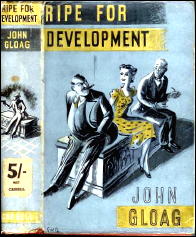Sun 5 Apr 2009
THE GOLDEN AGE OF BRITISH MYSTERY FICTION, PART III – Reviews by Allen J. Hubin.
Posted by Steve under Columns , Reviews[4] Comments
Reviews by Allen J. Hubin.
My first sampling of British author John Laurence, The Fanshawe Court Mystery (Hodder & Stoughton, 1925), quite encourages me. This is a well-paced tale, nicely complex in plotting and properly mystifying.
Sometime detective story writer John Martin is riding his motorcycle along a rural lane one rain-filled night, headed for home, when flagged down by the beautiful girl he’s worshiped from afar but not yet met. The girl has come through a forest path and urgently asks a ride to the station so she can catch the train to London.
He helps her, and later learns that a reclusive local resident has been found murdered along that path. Why was he killed, and what roles do the girl and her dragon-aunt play? Supt. Barlow seems not to be making much headway, so Martin and a crime reporter do their own digging, as much to save the girl as anything else. Gradually threads of conspiracy, fraud, murder and revenge emerge.

Ripe for Development (Cassell, 1936) is one of several novels by John Gloag about Lionel Buckby, and it’s a rather peculiar affair. Buckby has private money and only one passion: old furniture. He’s not very fond of the U.S…
…and he’s one of the least perceptive protagonists in the genre. He gets mixed up with a crooked New York art importer and a pair of Chicago gangsters and never catches the drift. The results are nearly fatal – but New York’s Insp. Slamble, allied with the Yard at the end, comes to the rescue. The scheme has something to do with furniture bearing Buckby’s authentication being shipped across the Atlantic. Amusing in spots but not impressive.
Another British author of total obscurity is Josephine Plain, who perpetuated three mysteries featuring Colin Anstruther in the 1930s. One of these is The Secret of the Snows (Butterworth, 1935), set in a Swiss mountain village.
Detestable chemist Alfred Gitterson married a young and beautiful and fearsomely superficial wife and in due course got himself strangled on a mountainside. Or so it appears at first glance. At second glance circumstances change drastically and it seems physically impossible for only one person to have done the deed.
Anstruther is providentially vacationing on the spot. He wants no part of the matter, but his old friend, Swiss detective M. Maraud, draws him in – and in any case Colin had suspected one of the principals of murder in an earlier case.
Various characters are slowly revealed for what they are as Colin and Maraud struggle against an impossibility which gets worse the more they dig. Pleasant and well-written as this is, it neither plays fair nor convinces nor satisfies in resolving the puzzle.
NOTE: Go here for the previous installment of this column.
April 6th, 2009 at 12:33 pm
John Laurence wrote another good book, Murder in the Stratosphere (1938) though it’s the only one by him I’ve read — though not the only one I should have read. All the same virtues as mentioned here and a nice bit about aviation and sabotage.
April 6th, 2009 at 2:37 pm
Given two recommendations now, I thought that John Laurence was worthy of listing his complete bibliography, a la the Revised Crime Fiction IV, also by Al Hubin:
LAURENCE, JOHN. Pseudonym of John Laurence Pritchard, 1885-1968.
* The Linkram Jewels (n.) Jenkins 1924 [England]
* The Fanshawe Court Mystery (n.) Hodder 1925 [England]
* The Perfect Alibi (n.) Jenkins 1926 [London]
* The Pursuing Shadow (n.) Hodder 1927 [England]
* The Secret of Sheen (n.) Long 1927 [England] *** US edition: International Fiction Library, 1929.
* The Double Cross Inn (n.) Long 1929 [England]
* The Honeymoon Mystery (n.) Long 1929 [England]
* The Mysteries of Ryeburn Manor (n.) Long 1930 [England]
* Mystery Money (n.) Long 1930 [England]
* Mystery from the Air (n.) Low 1934 [England]
* The Great Aeroplane Mystery (n.) Low 1935 [England]
* The Riddle of Wraye (n.) Low 1936 [England]
* The Whiteoakes Murder (n.) Low 1937 [England]
* The Gold Treasure Mystery (n.) Low 1938 [England]
* Murder in the Stratosphere (n.) Low 1938 [England]
There’s no mention of a police detective or other leading character who appears in more than one of these titles. If anyone knows differently, please let me or Al know. Only one of these books has been published in the US, indicated by the *** designator, and it’s the one most likely to be found cheaply. Not surprisingly, I’ve not been able to find any copies in dust jacket that I can show you.
— Steve
April 13th, 2009 at 8:33 pm
[…] Go here for the previous installment of this […]
December 21st, 2015 at 1:46 pm
The Riddle of Wraye and The Mystery of the Pearls, possibly others, can be read in the serialized form in which they appeared in the New Zealand Herald by using the “Papers Past” website which gives free access to New Zealand archive newspapers. I discovered and read the former story when I noticed it is set in Sussex, near where I live. Petworth, Midhurst, Pulborough,Horsham, Chichester, Bognor and Felpham are mentioned, but Wraye is a made-up name for a village which seems to be very loosely based on the village of Duncton